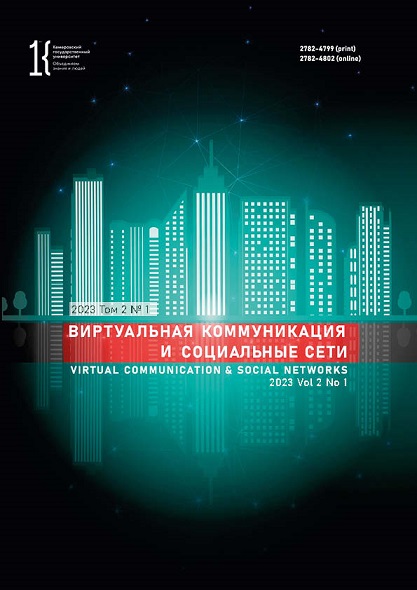Barnaul, Russian Federation
Barnaul, Russian Federation
The authors reconstructed the interpretive level in the model of a linguistic personality as a participant in a virtual dialogue. The authors proceeded from the understanding that the model of a linguistic personality includes the following levels: 1) superficial understanding of the speech product to create a response text, 2) interpretation, 3) modus level, 4) intertextual level. The interpretational level includes interpretation of the perceived initial cue. Interpretation in this case is a mental-linguistic activity, during which the meaning of the original message is appropriated by its addressee and verbalized in the response message. The following interpretative strategies serve here as description units: author- and text-oriented, holistic and elementary, linguistic trust and linguistic skepticism, copyial and creative. The research featured responses of native speakers published on the portal of the Bankfax news agency. The analysis of dialogic utterances was followed by a reconstruction of the interpretive level in the structure of a linguistic personality as a participant in virtual dialogue. The author of the response proved to be an active interpreter with various interpretation strategies.
dialogic language ability, interpretation, interpretation strategy, social networks, structure of language personality, virtual language personality
1. Van Dijk T. A., Kintsch W. Strategies for understanding coherent text. New in foreign linguistics, comps. and eds. Petrov V. V., Gerasimov V. I. Moscow: Progress, 1988, iss. 23: Cognitive aspects of language, 153-211. (In Russ.)
2. Demyankov V. Z. Interpretation as a tool and as an object of linguistics. Voprosy filologii, 1999, (2): 5-13. (In Russ.)
3. Zelenskaya V. V. Representative essence of a linguistic personality in the communicative aspect of implementation. Dr. Philol. Sci. Diss. Abstr. Krasnodar, 2000, 32. (In Russ.)
4. Kim L. G. Variative and interpretative functioning of the text: theoretical and experimental research. Dr. Philol. Sci. Diss. Kemerovo, 2010, 405. (In Russ.)
5. Melnik N. V. Derivatological and linguo¬personological interpretation of secondary text. Vestnik Kemerovskogo gosudarstvennogo universiteta, 2010, (4): 148-153. (In Russ.)
6. Napreenko G. V. Authorship identification of the text on the lexical level (formal-quantitative model). Vestnik Tomskogo gosudarstvennogo universiteta, 2014, (379): 17-23. (In Russ.)
7. Potebnya A. A. Aesthetics and poetics. Moscow: Iskusstvo, 1976, 614. (In Russ.)
8. Lingua-cognitive styles of reproduction in abstracts of students’ scientific articles. V mire nauchnykh otkrytiy, 2009, (1): 104-112. (In Russ.)
9. Skubieva E. N. The model of the dialogic language personality internet communication participant. Linguistic school in the Republic of Tatarstan: history and modernity: Intern. Sci.-Prac. Conf., Kazan, 16-17 Feb 2021. Kazan: KFU, 2021, 148-153. (In Russ.)
10. Ulanovich O. I. Understanding of the original text while translating: phenomenological aspects. Vestnik Tomskogo Gosudarstvennogo Universiteta, Filologiya, 2015, (1): 78-87. (In Russ.) https://doi.org/10.17223/19986645/33/7
11. Khisamova G. G. Socio-psychological types of linguistic personalities in V. M. Shukshin’s stories. Filologicheskie nauki, 2008, (4): 100-109. (In Russ.)
12. Shpilnaya N. N. Mirror symmetricity of the communicative situation as the condition of the genesis of dialogical utterance. Kul'tura i tekst, 2017, (3): 154-166. (In Russ.)















